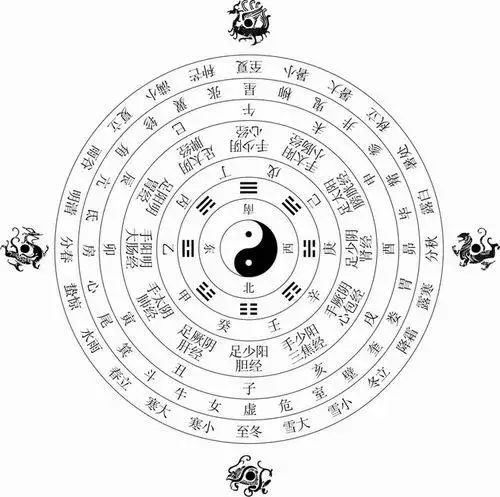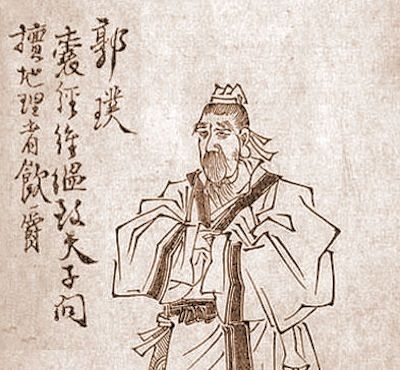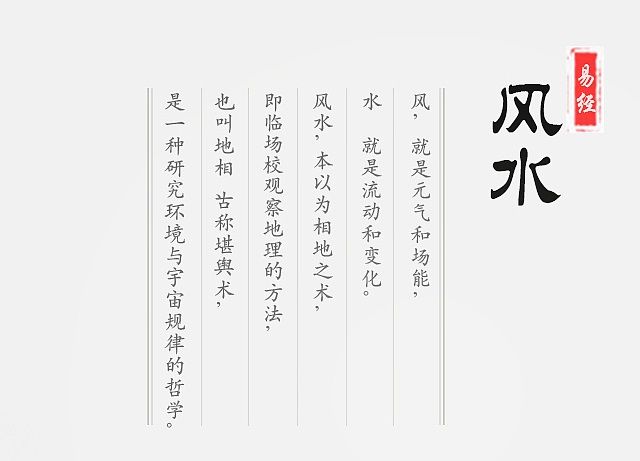History of Feng shui
Feng Shui has undergone various changes throughout different historical periods. This article provides a brief overview of its evolution during each period.
1. Primitive society
Feng Shui is believed to have originated from primitive society. In ancient times, humans did not have the ability to easily change the natural world, so they had to choose a location with the most basic conditions for survival. This was essential for their survival and development as a society. Good lands provided the conditions for primitive societies to develop and grow large enough to become the first ancient civilizations in the world.
This is natural selection, but this natural selection process has formed the most basic theories in geography and climate research, laying the foundation for later feng shui research. It also represents the most basic thing in the goal of feng shui research, choosing the best place to live.
2. Shang and Zhou Dynasties
Shang dynasty (1600-1046 BC)
Western Zhou Period (1046–771 BC)
Accumulation period
During a period where records about feng shui were uncommon, divination using animal bones was a highly developed practice. Oracle bones, made from pieces of ox scapula and turtle plastron, were used for pyromancy, a form of divination, in ancient China. Diviners would submit questions to deities about a range of topics such as weather, crop planting, the fortunes of members of the royal family and military endeavors.
One famous event during this time was the story of moving the capital at the end of the Shang Dynasty. The 19th emperor of the Shang Dynasty, fearing for its safety, used divination to relocate the capital. The Shang Dynasty flourished for hundreds of years. Over time, through continuous practice and synthesis of selecting locations, capitals, and residences, a set of simple ideological guidelines and practical methods gradually emerged. These can be considered as the initial accumulation of ideas about Feng Shui during the Shang and Zhou dynasties.
3. Spring and Autumn and Warring States Period
Spring and Autumn Period (770–476 BC)
Warring States Period (475–221 BC)
Thoughts and theories are formed
During the Spring and Autumn Period and the Warring States Period, a wide range of philosophical and religious schools emerged, leading to the era being known as the "Hundred Schools of Thought". This period saw the development of major philosophies like Legalism, Confucianism, and Taoism, which were later passed down to later empires. Confucius, born as Kong Qiu孔丘(551–479 BCE), was a prominent figure during this time.
The period saw the emergence and growth of several popular theories, including the theory of Yin and Yang阴阳学说, the theory of the Five Elements五行学说, the theory of vitality元气学说, and the theory of eight trigrams八卦学说. These theories laid a relatively solid foundation for ideas and theories about Feng Shui.

4. The Qin and Han Dynasties
Qin Dynasty (221–206 BC)
Han Dynasty (206 BC–220 AD)
Outstanding development in theory and application
During the Qin and Han dynasties, Feng Shui theory began to take shape. People from all walks of life started paying attention to the construction of mausoleums and recognized that the quality of these tombs would have an impact on future generations. They also realized that the design and layout of housing could affect human development. During this period, books appeared related to tombs and housing such as (葬历), (移迁法), (图宅术), (堪舆金匮), (宫宅地形)...
The study and application of the theory of Yin and Yang, Five Elements阴阳五行学说, and Theory of I Ching易学, along with the prevalence of theological thought in the Eastern Han Dynasty, has provided the necessary theoretical foundation and application for the development of Feng Shui. During the Qin and Han dynasties, terms such as earth地脉, qi气, direction 方位, Tai Sui太岁 began to appear, and a comprehensive understanding of heaven and earth gradually took shape. We can say that at this time, Feng Shui had a relatively complete theoretical foundation.
5. Wei, Jin, Southern and Northern Dynasties
The Three Kingdoms Period (220-265 AD)
Jin Dynasty (Sima Jin) (265-420 AD)
Northern and Southern Dynasties (420–589 AD)
Popular and widely used
Was the era when Feng Shui theory was gradually perfected and widely spread, Feng Shui masters such as Quan Nhan管辂, and Guo Pu郭璞all appeared in this era.
The concept of "Feng Shui"风水was formed during this era. Guo Pu of the Jin dynasty first proposed the term "Feng Shui" in his "Book of Burial"葬书. Guo Pu's "Burial Sutra" is a milestone marking the development of Feng Shui in this era. To a greater extent, it is also a milestone in the history of the development of Chinese Feng Shui, as well as a must-read for future generations.

The rise of metaphysics in this era also pushed the spread and application of Feng Shui to a new level.
6. Sui, Tang, and Five Dynasties
Sui Dynasty (581–618 AD)
Tang Dynasty (618–907 AD)
Five Dynasties and Ten Kingdoms Period (907–960 AD)
Feng Shui became popular and widespread in the Sui, Tang, and Five Dynasties dynasties.
Xiao Ji蕭吉was a famous physiognomy master of the Sui Dynasty, his works include "Xiandi Yaolu"相地要录, "Zhai Jing"宅经, "Burial Jing"葬经and other works, which were extremely popular among later generations.
By the Tang Dynasty, the country had a strong economy, prosperous culture, and ideological tolerance. Different Feng Shui theories appear continuously and form a relatively complete theoretical system.
Yang Yunsong杨筠松created a systematic Feng Shui theory during the Tang Dynasty and also had specific practical operating standards, which is China's most scientific and official Feng Shui.
Yang Yunsong was a state advisor to the Emperor of the Tang Dynasty. He was a famous geography and feng shui expert during the Tang Dynasty. Throughout his life, he devoted himself to adapting measures to local conditions, rationally using natural resources, and helping people plan humane living environments. created a Chinese geographical culture with systematic theories and specific practical operating procedures from the Tang Dynasty, and created a Chinese geographical culture. In geography, Kan Yu had an extremely high status in the academic world and was respectfully called "Duong Cong"杨公by later generations.

He also created the Chinese compass, using the magnetic direction as the yang needle as the ground, the solar landscape direction as the suture needle as the sky disk, and there were 24 mountains and 72 dragons on it. Up to now, most of the books on Feng Shui that we have studied are books written by Duong Cong, such as "Shaking Long Kinh", "Four acupuncture points", "Twenty-four methods of burying sand", " Qingxiang Ao Yu", "Jade Ruler Sutra" etc., these are works on Feng Shui theory by Duong Cong.
After Yang Junsong wrote "Qingnangaoyu"青囊奥语, his theory gradually became an independent theory in the Tang Dynasty, with origins and systems, Branchs also appeared. The most typical are Xingshi Branch形勢派and Liqi Branch理气派.
During the Five Dynasties and Ten Kingdoms period, the Tang Dynasty emperors all followed the Feng Shui perspective, and the emperors in each generation were also very enthusiastic about Feng Shui. In addition, the introduction of Buddhism and the introduction of Feng Shui ideas. Fate and rebirth further fueled the popularity of Feng Shui.
7. Song and Yuan Dynasties
Song Dynasty (960–1279)
Yuan Dynasty (1271–1368)
The theory was complete and popular in the Song Dynasty but declined in the Yuan Dynasty
The Song Dynasty can be said to be the peak period of Chinese Feng Shui development, the theory of Feng Shui during this period can be said to be very complete. During the Song Dynasty, from the royal family, and mandarins to the people, every family applied Feng Shui knowledge to life.
Furthermore, famous masters and classic works were very popular during this period, and feng shui masters in society at that time began to be sought after by everyone. The classic works of this period can be mentioned as "Ji Guan Pian"催官篇, "Qi Point Method"理气穴法, "Tianxing Pian"天星篇, etc.
The Yuan Dynasty was a period when the entire intellectual culture declined, so I won't go into detail here.
8. Ming and Qing Dynasties
Ming Dynasty (1368–1644)
Qing Dynasty (1644–1912)
Golden age and prosperity coexisted
The Ming Dynasty can be considered another peak period in the development of Feng Shui, and also a turning point in the development of Chinese Feng Shui from prosperity to decline.
After Zhou Yuanzhang founded the Ming Dynasty, Feng Shui became part of folk customs like the Song Dynasty. As long as you have financial potential, whether you choose a house or a grave, you must hire a Feng Shui master.
This was due to the prosperity of Feng Shui in the Ming Dynasty and the high admiration of the royal family, which led to the strong development of Feng Shui in the late Ming Dynasty. Until the Qing Dynasty, feng shui had ups and downs, from prosperity to decline. During this period, very few princes, nobles, and mandarins did not believe in Feng Shui.
During this period, an important Feng Shui sect also emerged - the Xuan Kong Sect玄空派. This is the good side of Feng Shui development,
On the other hand, during this period, many groups of individuals appeared to take advantage of people's belief in feng shui, to commit fraud and superstitious acts for personal gain. Therefore, during this period, people had two separate views about Feng Shui, one was to believe in it, and the other was to think that it was useless and unrealistic.
9. Republic of China
Republic of China (1912–1949)
Modern times of many sects and pseudo-scholars
In modern society, China has developed into a relatively difficult and chaotic society. Feng Shui is becoming increasingly sectarian and isolationist. Many different sects work secretly and criticize each other, even some Feng Shui has become a fake research, using the word Feng Shui to deceive the world and steal the world's reputation.
10. Modern times
People's Republic of China (1949–present)
The modern period of development regained attention and was reborn
In the early days of liberation, due to specific historical circumstances, Feng Shui was labeled as superstitious and developed at a stagnant stage. Up to now, feng shui has been considered a heritage and is promoted all over the world, not just in China. Seoul National University in Korea offers Feng Shui theory courses. Japan has established an association of Feng Shui researchers. 110 universities offer Feng Shui classes, and more than 20 universities in the United States offer professional courses such as Yijing Feng Shui, etc. Peking University, Tsinghua University, Wuhan University, and Dai Hong Kong schools in China both offer courses in I Ching and Architectural Feng Shui. In modern times, Feng Shui has been widely applied in the educational system, architecture, and family culture of many countries.

Feng Shui is the crystallization of great Chinese cultural wisdom and is very popular in Southeast Asia. Feng shui has developed to this day. During the long process of practical development, it has integrated many scientific disciplines from the past to present, both domestic and foreign, with rich connotations and a unique theoretical system.